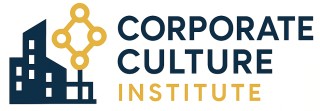
Understanding the Role of HR Document Management in Corporate Culture
The Significance of Integrating HR Document Management into Corporate Culture
The integration of robust HR document management into a business's corporate culture is not merely about filing and archiving; it's about cultivating an environment of transparency, efficiency, and compliance. A well-structured document management system is the backbone of seamless human resources operations within any organization. It streamlines processes, ensures accessibility, and fortifies data security. The management of employee documents, such as performance reviews and employee records, plays a vital role in shaping the corporate ethos. When organizations embed security-focused document management practices into their culture, they lay a foundation built on trust and reliability. Employees have confidence in the knowledge that their sensitive information, stored as digital documents and on secure cloud-based platforms, is handled with the utmost care. This trust is integral to fostering a positive work environment, as it reassures staff that their data is managed responsibly. Furthermore, efficient document management systems equip humans with automated workflows, reducing time spent on mundane tasks and allowing for more effective resource allocation. By minimizing the manual handling of files, businesses improve productivity and focus on strategic initiatives that strengthen corporate culture. Incorporating a data-driven management system ensures compliance with regulatory standards and supports the organizational goals of transparency and fairness. Access to necessary documents is streamlined, improving the overall employee experience and facilitating a supportive work culture. Effective communication with stakeholders and development teams can enhance this framework, crafting a cohesive and collaborative organizational environment. Explore How Effective Communication Enhances Organizational CohesionKey Challenges in HR Document Management
Addressing Persistent HR Document Management Obstacles
Handling employee documents and maintaining a seamless management system can present significant hurdles for organizations. To create a cohesive corporate culture, it's essential to recognize and confront these challenges.- Data Security Risks: With sensitive employee records and personal data being integral to HR documents, ensuring high levels of data security is paramount. As organizations transition to digital document systems, safeguarding information from unauthorized access becomes increasingly important.
- Document Accessibility: Guaranteeing that the right employees have access to necessary documents while maintaining strict access controls is crucial. An efficient document management system should allow for streamlined access to reduce time delays in obtaining critical files.
- Time-Consuming Manual Processes: Traditional file management often involves tedious, manual procedures that can lead to inefficiencies. Adopting automated workflows can expedite processes like performance reviews, ultimately improving the management of employee documents.
- Compliance and Regulatory Adherence: Navigating the intricate landscape of compliance requires meticulous attention to regulation changes. A robust management software should feature alerts for compliance updates, ensuring the organization remains within legal boundaries.
- Cloud-Based Document Storage: Transitioning to cloud-based systems can offer enhanced document storage and accessibility. However, integrating these systems requires careful planning to prevent data errors and maintain seamless operations.
Best Practices for Efficient HR Document Management
Implementing Best Practices for Effective Document Handling
Efficient HR document management is vital for maintaining a cohesive corporate culture. By focusing on best practices, organizations can ensure that their document handling processes not only support business goals but also foster a positive environment for employees. Below are some key strategies to consider:- Adopt Management Software: Embracing document management software with comprehensive features can streamline access to employee documents and records. Such systems offer secure storage, automated workflows, and digital tracking capabilities, which reduce the time spent on manual tasks.
- Ensure Data Security: Employees expect their personal and professional data to remain confidential. A robust document management system should incorporate strong security measures such as encryption and access control to protect sensitive employee files. This helps maintain trust and compliance with data protection regulations.
- Facilitate Easy Access: Providing authorized personnel with easy access to needed documents saves time and boosts efficiency. A cloud-based solution can be particularly beneficial, allowing managers to access documents from anywhere, thus supporting a culture of flexibility and responsiveness.
- Focus on Compliance: Compliance with legal and regulatory requirements is non-negotiable. Establishing a systematic process for maintaining and auditing employee files ensures that the organization stays compliant, minimizing risks of penalties or legal issues.
- Regular Training: Regular training and updates on new document software and policies keep employees informed about the best practices and enhance overall efficiency. Empowering employees with knowledge fosters a sense of ownership and accountability in maintaining the integrity of HR documents.
The Impact of Technology on HR Document Management
Embracing Technology for Improved HR Document Management
The integration of technology into HR document management is revolutionizing how organizations handle employee records and data. With the advent of digital solutions, the traditional methods of managing employee files are becoming obsolete, paving the way for more efficient and secure systems.
One of the significant advantages of using technology in document management is the ability to streamline access to employee documents. With a robust management system, HR teams can quickly retrieve files, saving valuable time and resources. This ease of access is crucial in maintaining an agile business environment where decisions often rely on timely information.
Enhancing Data Security and Compliance
Data security is a top priority for any organization, especially when dealing with sensitive employee information. Digital document management systems offer advanced security features, ensuring that employee files are protected against unauthorized access. These systems often include encryption, secure storage, and access control, which are essential for maintaining compliance with data protection regulations.
Moreover, automated workflows within document management software can help ensure that compliance requirements are consistently met. By automating routine tasks such as performance reviews and employee document updates, organizations can reduce the risk of human error and ensure that all necessary steps are followed.
Leveraging Cloud-Based Solutions
Cloud-based document management solutions offer numerous benefits, including scalability, flexibility, and cost-effectiveness. By moving employee records to the cloud, organizations can provide remote access to documents, facilitating a more dynamic work environment. This is particularly beneficial for businesses with a distributed workforce, as it allows employees to access documents from anywhere, at any time.
Furthermore, cloud-based systems often come with built-in data backup and recovery features, ensuring that employee records are safe even in the event of a system failure. This level of reliability is crucial for maintaining business continuity and safeguarding sensitive information.
Integrating with Organizational Goals
As technology continues to evolve, it is essential for organizations to align their document management strategies with their broader business objectives. By integrating digital solutions into their HR processes, companies can enhance their overall efficiency and foster a cohesive corporate culture. This alignment not only improves operational performance but also supports the organization's long-term goals.
In conclusion, the impact of technology on HR document management is profound. By adopting advanced management systems and leveraging digital tools, organizations can streamline their processes, enhance data security, and align their strategies with organizational goals, ultimately creating a more cohesive and efficient corporate culture.
Aligning HR Document Management with Organizational Goals
Integrating HR Document Management with Business Objectives
In today's fast-paced digital landscape, aligning HR document management with broader organizational goals becomes crucial. Human resources departments must adopt a strategic approach to ensure that employee records and documents effectively support business ambitions while maintaining compliance and data security. To achieve this alignment, organizations must prioritize seamless access to employee documents and ensure that their document management systems are integrated with broader management software. This integration facilitates efficient access to essential files, enhances data security, and simplifies file management, bolstering employee performance and meeting compliance requirements. Key practices for aligning HR document management with organizational goals include:- Implementing cloud-based storage solutions: Transitioning to cloud-based document storage options enables secure, remote access to employee files. This flexibility allows employees and HR managers to access documents anytime and anywhere, promoting a more agile and responsive corporate culture.
- Leveraging automated workflows: By incorporating automated workflows into document management systems, organizations can streamline repetitive tasks, reduce time spent on document retrieval, and ensure timely performance reviews. Automation promotes efficiency and minimizes errors in managing employee files.
- Ensuring data security features are paramount: When considering document management software, security features must be a top priority. A secure document manager system shields sensitive employee data from unauthorized access, safeguarding both compliance and organizational reputation.
- Integrating systems company-wide: Integration of HR document management systems with other business functions, such as payroll and performance management software, ensures consistent data flow and reduces redundancy in data entry, thus supporting organizational goals effectively.













